“We stepped into a new frame and grew to be a part of (the Sea), related in some subtle way to the reefs and beaches, related to the animals and to the stirring waters and the warm brackish lagoons. The trip had dimension and tone. It was a thing whose boundaries seeped through itself and beyond into some time and space that was more than all the Gulf and more than all our lives.” John Steinbeck, The Log from the Sea of Cortez.
At some point in our trip, maybe it was when anchored on the east side of Isla Carmen, off the beaten track, Rick and I entered into the sense of time and space that Steinbeck described. There was no cell phone coverage, no data except the wind speed and direction we could download off our shortwave radio, and no internet: no vulgar intrusion into the bright sunshine and blue waters and contrasting brown cliffs and the endless dinghy hunt for great fishing grounds. There was only one other boat in the anchorage, and they had invited us. We caught so much fish that we could stay there forever and not starve. I finally got my new kayak blown up and paddled around the still waters and watched up close the colorful, huge crabs run sideways along the rocky shoreline. I never wanted to leave.
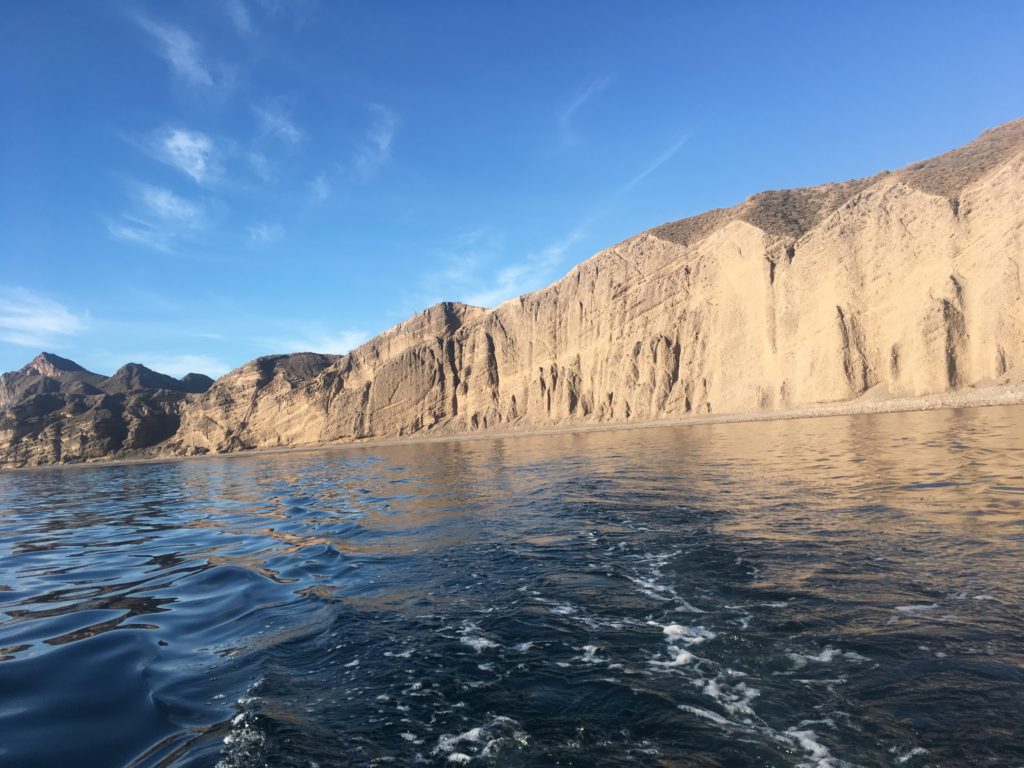
The brown cliffs contrasting with the blue water that is such an iconic symbol in the Sea of Cortez, as pictured at Bahia Cobre
But leave we had to, if we had any hope of exploring the northern part of the Sea. You see, if all goes well, this will be our last season in Mexico until we return someday after having sailed to French Polynesia and back. Last year’s Sea of Cortez trip was cut short due to illness, and this year’s trip was being cut off at both ends due to the need for recertification of our liferaft in Ensenada at the beginning, and our choice to take Spanish in Taxco in July, thus shortening the Sea time to about 6 weeks.
So we weighed anchor early on Monday, May 15 from Bahia Cobre on Isla Carmen, with the intention of having a nice daysail 26 nm north to San Juanico, an anchorage we remember fondly from last year. After that, everything north would be new territory for us. We were excited.
Unfortunately, our timeless bliss was interrupted by a telephone call as soon as we got into cell range, notifying us of the bizarre and tragic accidental death by train of Rick’s great nephew. The ordeal of getting to California for the funeral is a subject better kept for another blog post, but it did result in a 100-mile dash north to the nearest marina to leave our boat while we went to California for the funeral. We are now on a 15-hour bus ride from Tijuana on our way back to Santa Rosalia where Cool Change is waiting for us.
I decided this trip interruption is a good place to end the first blog of the Patrinellis Log from the Sea of Cortez. Rick has been recording his thoughts nearly daily since we left La Paz for the Sea, so most of the following is authored by Rick. My comments (Cindy’s) are distinguished by italics.
April 30 to May 2
Once we returned from our road trip up the Baja to recertify our life raft and pick up a few things in San Diego, we had to remain a few days in Marina Cortez before we headed up to the Sea. For one, we had brought down a new hot water heater from San Diego and had no room for it unless we installed it! Rick did a quick job of installing it; unfortunately, it did not solve our leak problem, but at least this way we will be crossing the Pacific with a brand new water heater instead of a 18 year old one. As to the water leak, we have now narrowed down its location to between the hot water heater and one of our two sinks. There is an inaccessible union alongside the fuel tank that is probably the culprit; we might just abandon that run and install a new one to solve the problem. But not now; the sea awaits!
We also got an occasion to go to our favorite hamburger joint in La Paz, Bandido’s. Hamburgers aren’t usually very good in Mexico; they take the word literally and place a thin slice of ham on top of a mixed-meat skinny patty and call it good. But Bandido’s is the exception. You can get fat there. The hamburgers are huge and can come with as much extra fixin’s as your stomach can handle. The onion rings are also to die for. It has lovely outdoor seating with soft lighting, and Rick also likes to place because the grill is under the hood of a 1950’s car and the music is oldies but goodies rock and roll.
Besides boat projects and culinary delights, one more attraction in La Paz was the huge schooner called Martin Sheen that was in the slip across from us. Mike, responsible for all things mechanical in the boat, invited us for a tour. This boat is part of the Sea Shepherd Conservation Society research fleet. They were on a scientific expedition examining whales, but this Society is also known for their often controversial efforts to prevent the extinction of a small dolphin species in the northern Sea of Cortez due to improper fishing techniques.
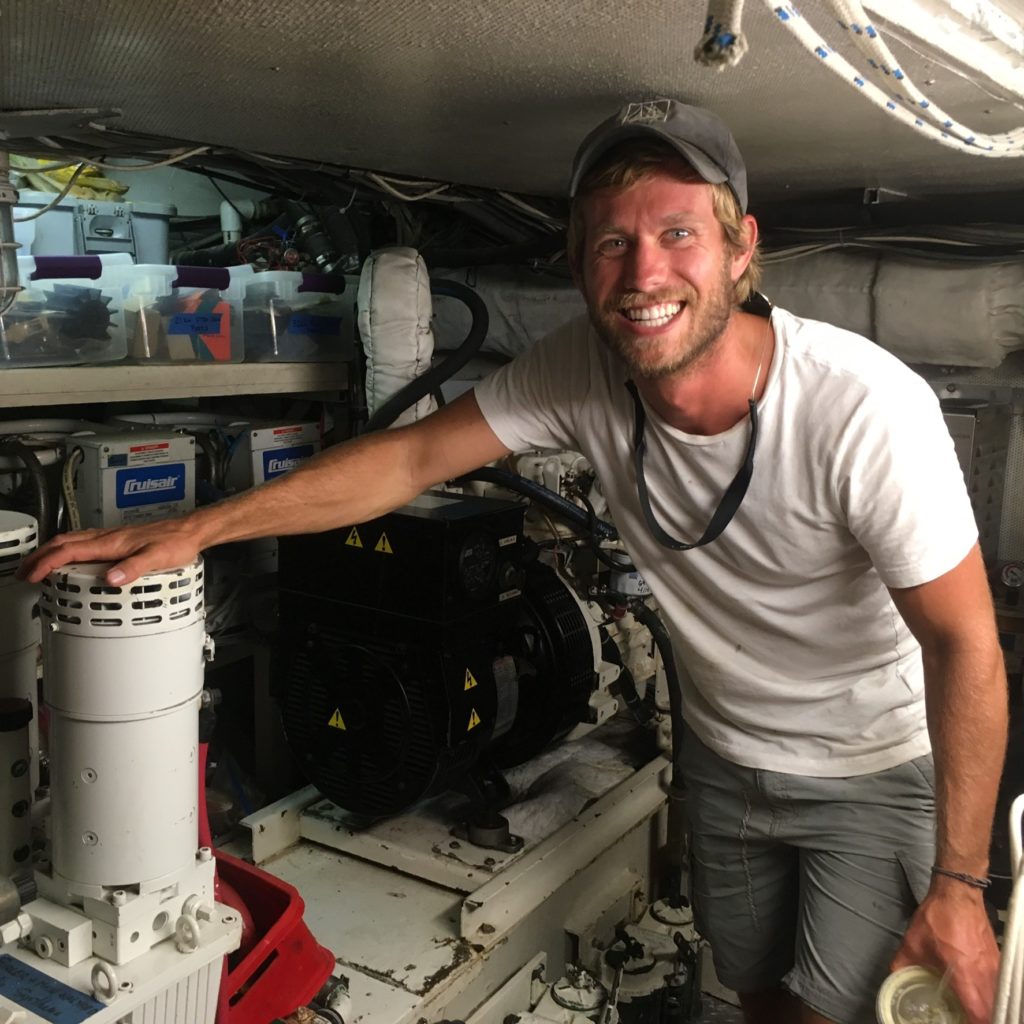
Mike proudly shows off his engine room. A mechanical engineer by training, Mike abandoned a lucrative career for a meaningful one, together with a vegan boat diet and a small bunk.
May 03, 2017
After leaving Cool Change at Marina Cortez in La Paz while we got our liferaft recertified and went into San Diego for needed parts and equipment, it was great to slip the dock lines and start our several week journey north into the sea. We left on an ebb tide, which added two knots of speed to our getaway. The channel that leads to La Paz is 5 nm long. Once out of the channel, we could find no wind, so we were destined to motor the whole way to our first stop 26 miles north in Ensenada Grande on Isla Partida. We were trolling as we went. In the section between the tip of the La Paz peninsula and Isla Espíritu Santo, we caught eight fish! All were 2+ pounds and we released all but one. They were skipjack tuna, which are not the best eating fish but we will experiment with one.
The anchorage at Ensenada Grande is large as the name implies, with room for dozens of boats in the three lobes of the anchorage. This time of year, Coromuels frequent the area. Coromuels are wind events caused by the difference in temperature between the cool Pacific side of the Baja peninsula and the much warmer temperatures that build up on the east side during the day. So in the night, this temp differential starts a flow of air that can reach speeds of anywhere between 15 and 40 knots! It is unique to the stretch of water north of La Paz for a range of about 50 miles. The winds in a Coromuel are generally from the Southwest. When we got to the anchorage late in the afternoon, there were several boats there already, and we were surprised to see the most protected area empty of any boats. This is in the southern most lobe with a small private beach area right below the cliff where the fisherman’s cross is located.
We wondered if the other folks in the anchorage knew something we did not! We anchored there and then got the dinghy set up and went for an exploratory ride around the perimeter of the entire anchorage. The water was blue to green and very clear. You can easily see the bottom in 25 feet of water and there were lots of reef fish swimming about. The water was so clear from the dinghy that the multicolored reef fish were as visible as if we had been snorkeling! We sat on the bow of Cool Change at sunset watching the rays jump out of the water high in the air flapping their wings and trying to fly before they would slap back down in the water. It was a fun sunset show.
After dinner we decided to watch “The Blues Brothers.” It was a kick, as it has been many years since we had seen it. The music of James Brown, Ray Charles, Aretha Franklin and many other greats was just awesome to see, as their performances were woven into the story line. If you haven’t seen this one in a while I urge you to break it out! Sometime during the movie about 10:30 pm, the Coromuel winds started up. By the time we were ready for bed, the wind was howling. Sustained winds were about 15 knots but the frequent gusts were in the high 20s. Our mighty Mantus anchor and snubber held fine in the good sand bottom though I had to get up a few times to check outside and to quiet the rig. We had a good night’s rest anyway and today we will make our way to the next island north in the chain, called Isla San Francisco.
May 4, 2017
In the morning after our night at Ensenada Grande, the SW winds had not let up. We lazed around until almost noon before we left the anchorage and still had 14 knots from the SW. That put it right on our stern as we headed north farther up into the sea. Though we love Isla San Francisco and its huge classic bay and white sand beach, it has no protection from South winds. We decided that we would would head for San Evaristo on the Baja peninsula because it is proportedly well protected from all but easterly wind and seas…. Or so we thought. We were sailing wing on wing making very good time and soon we saw our friends on Aolean on our AIS and we hailed them to say hello. They were heading back to La Paz where they had an appointment to ship their lovely Skeptor sloop back to the Pacific Northwest. We asked them where they had spent the night and they told us they had a good night at Cabeza de Mechudo. We looked in our cruising guide and we had a note on that page saying “Don’t go… Jinxed!”
We think this note’s origin was from a conversation with a young photographer/ biologist/sailer we met in La Paz in early 2015. He was a bright young man with a small 21 foot sailboat. He lives in Mexico City where he has a professional photography business and he keeps his boat in La Paz. In his “free time” he is re-tracing the route Steinbeck wrote about in his book book, The Log from the Sea of Cortez. Raul invented and built a special camera to enable him to take photos through a microscope to capture the same organisms Steinbeck’s team described but were unable to photograph when he was on his scientific expedition of the sea. We had a lovely time one evening on Cool Change together with Raul, getting acquainted. Before we parted ways, he gave us a signed print of one of the organisms he had already photographed during his travels and we gave him a copy of Shawn and Heather’s sailing guide to the Sea Of Cortez. At the time, Raul’s work was on exhibit in an art museum in San Diego, Ca. When Steinbeck undertook his expedition, he chartered a large off season fishing trawler, which was great for a home base and lab, but to collect their specimens they would have to dinghy in to areas and leave the trawler in deeper water. Raul’s idea was to have a small sailboat that he could live on while he traveled, yet be small enough that he could get close enough in with all his gear on station and ready to use.
So anyway, regarding the anchorage at Mechudo, though we could not remember why the place was jinxed, and based on the recommendation of our friends on Aoleon, we decided to take a chance and anchor there for the night. Interestingly enough, there is a legend of Mechudo we read about in our cruisers guide. A Yaqui Indian pearl diver named Mechudo, who worked for the Spaniards during the time of their explorations of the Sea of Cortez, spotted a huge oyster at a depth he had never attained before. When he surfaced he excitedly told his shipmates about it and the captain of the ship he was working on encouraged him to make one more dive to see if he could capture this magnificent oyster. He dove again, but this time he did not re-surface. The weather was deteriorating so after a time the ship ended up sailing back to shore without the diver aboard. The next day they returned with a search party and found his body floating in the bay. His hand was clenched tight around the huge oyster he had lost his life attaining. So it was that thereafter, this bay marking a point (or head) was to be known as Cabeza de Mechudo.
We entered the bay and dropped anchor as the only boat in the bay. It was breezy and there was some fetch but the wind held our bow right into it so it was comfortable. Later in the night after we had gone to sleep, the wind died but there was a large uncomfortable swell coming into the bay that was now hitting us on the beam. Cindy did fine but I was awake most of the night due to the conditions.
I forgot to mention that the first night we left La Paz, the head broke. It is electric and was blowing fuses as something apparently was jammed in the blades. On top of that, the shower sump drain failed and would not pump the shower discharge water overboard. While we were sailing from Ensenada Grande, we started working on the shower drain and eventually got it all working again but alas, we still had no working head! That type of repair is not one to undertake while underway! We decided that we should wait until we were in San Evaristo, a place where we could hang out comfortably at anchor in calm seas while we worked on it.
May 5th 2017
While en route to Cabeza Mechudo, we had a minor miscalculation that ended up ripping a crucial zipper off the front of our bimini. The zipper is used to add a section of sun protection to the cockpit. We worked together with a palm awl/sewing tool to fix it. While we did not feel jinxed on our stay at Machudo, there was not much to explore either, so we stayed aboard. As it turned out, the SW wind & sea we were expecting was more SE instead. This meant we did not have the protection we had hoped for and is why we ended up having a very rolly night. We were both ready to get out of there and on our way to San Evaristo early. The SE winds were blowing and we would be able to sail the seven or so miles to San Evaristo in no time. In fact, the wind direction and speed were so good that we did not even bother to deploy the mainsail;,we sailed on the jib alone. Once anchored in San Evaristo, we spent the day working on the head and got it all fixed so once again life was grand and all systems operational aboard Cool Change. The details of the head repair job are disgusting so I will not sully this blog with them. Suffice it to say we were happy we had a good supply of disposable gloves aboard! The source of the problem turned out to be a foreign object (a tie wrap) that had fallen in the head and gotten jammed in the macerator. Happily all was repairable, & no real damage was done. As to “how it got there,” I think it was related to a job I was doing a few days before in the compartment behind the head. I was “making neat” some wiring that was back there using tie wraps and at some point one must have dropped into the head. We find that many of the problems aboard boats are self inflicted, one way or another.
There is a small tienda in Evaristo but we found it closed. Another cruiser told us they were on a restocking run to La Paz. Also there is a little restaurant we remembered from our last trip up the sea called Lupe Sierra and Maggie Mae’s, but they were closed also. The word in the anchorage was that the restaurant was waiting on the tienda to bring supplies he can then use in the restaurant! This restaurant has a tradition of providing large seashells and craft paint for cruisers to paint and adorn with the name of their boat or whatever they like. Then Lupe drills a hole in the shell and nails it to one of the the beams or posts holding up the the dining patio roof. We found the shell we had painted for Cool Change hanging up right where we left it a year ago. The unsettling thing was that the shell was somehow turned upside down! We sailors tend to have our superstitions so we decided to fix the problem and take measures to insure that it would not happen again.
This involved a quick dinghy ride back to Cool Change for some tools and hardware! While we were hanging about using Lupe’s shade and chairs, we had fun finding other shells painted with the names of many of the cruisers we have met along the way thru our voyaging of Mexican waters. Though it would have been fun to have a meal and a beer at Lupe Sierra & Maggie Mae’s, Cindy baked some home made bread and tortillas! We will BBQ tonight and have hamburgers on her fresh bread if we can keep our hands off of it until then.
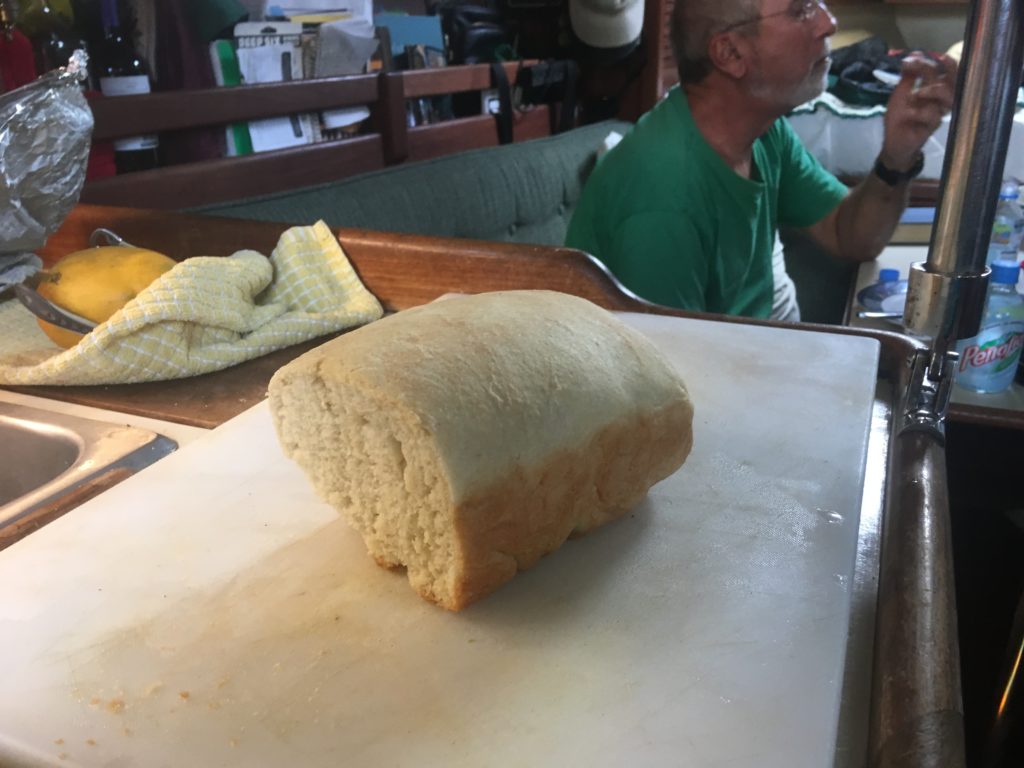
Cindy’s first successful loaf of boat-baked bread. We should have taken a picture when it first came out of the oven but it was too tempting to resist, as evidenced by Rick’s munching in the background
There were only two other boats in San Evaristo anchorage when we arrived. Both were solo sailors, one of whom we met as we were on our way to the beach. Roger is an older British gent with a beautiful 29 foot Norsea sloop. It is a very stout small cruiser yet light enough at 4 tons, he can actually load it on a trailer. He spends six months during summer in the UK then comes back to his boat he leaves in San Carlos on the hard. The other person was Norm who is cruising on his older Mariner 36.
There are about 20 families that live in San Evaristo full time. They fish for their livelihood and sustenance. There is a water desalinization plant here that provides the town with fresh water along with ice that the fishermen use to pack their catch while they take it to market in La Paz. Evaristo is a very isolated community and connected to the main North/South highway 1 by a long dirt road. There is no electricity or cellular reception and everyone uses marine radios to communicate between homes as well as with their fishermen on the water. It’s kind of like everyone is on an old fashioned party line. It is an interesting and simple life they lead. The people we saw appeared healthy and happy with their lives, and I would think they should be. There appears to be little stress and literally everyone knows everyone here. Lupe’s restaurant definitely caters to cruisers and makes us feel very welcome when we are there. He has set up a couple of bins with signs in Spanish and English to “deposit your trash here”. That is always a welcome sight to cruisers when we can offload the trash we have accumulated that cannot go overboard. The tienda is very small but well stocked with fruits and veggies when it is open. We are careful not to buy too much as it is the town’s only store and it would be rude to purchase more than we absolutely need and cause them to run out of things for the town folk. The tienda opened finally on our last day there, and we were able to get everything we needed.
Our first night in Evaristo we had beautiful conditions: a clear night sky and soft cool breezes through the night on calm clear water. The next day saw more boats coming into the anchorage. We guessed this was because there was a strong “Norther” expected in the next day or so. Also we noticed two women come into the bay in long, sleek and well -equipped sea kayaks, landing their boats on the beach by the desalinization plant. We had gone to shore after hearing the tienda was open and met them as they were returning from there to their kayaks. They told us they were on a 14-day self-supported expedition from Loreto to Arroyo Verde. Cathy and Jami are an awesome & accomplished lesbian couple from New Mexico. Jami is an accomplished artist and Cathy is a physical therapist. They have been in Mexico for the last 5 weeks after having driven down the Baja peninsula to Loreto with their kayaks on top of the car. They are both accomplished whitewater rafters as well as sea kayakers. They carry six gallons of water between them when all topped up. They have various freeze dried foods and had been catching trigger fish along the way with a fishing stick they would troll over the reefs. A few days after setting out, their one camp stove failed on them so they were having to find driftwood to cook over. They were in good spirits and seemed to be enjoying the ride. We ended up spending the afternoon with them while they were waiting for the conditions to settle down a bit.
We all sat in the shade on the dining patio at Lupe and Maggie Mae’s restaurant along with Norm, the solo sailer on the Mariner 36 named Susie. The restaurant was still closed but luckily the tables and chairs were there along with Lupe’s Siamese mix cat, who took turns sitting in our laps and doing the thing where they rub their eye ducts on a person to claim them as personal property. Later, Jamiasked if she and Cathy could come out to take a tour of Cool Change and the 5 of us went to the boat had the tour and then shared a bottle of wine. Cathy and Jami decided to get moving again about 4:30 when things looked relatively calm once again. They only had about 3 miles to go to reach the campsite they were headed for that night.
After everyone left and around dusk, Cindy and I decided to take the dinghy on a fishing trip along the rocks just outside of the anchorage. It was the first real chance I had to use the “anchorage” fishing rig we picked up in San Diego on our recent visit. It consists of a nice Penn spinning reel with a medium weight 3 piece rod. There are two tips, one lighter than the other and it all fits neatly in a nice carry case. We went close to the rocky shore with Cindy driving and I was able to cast into some nice spots. We caught a nice 2+ pound trigger fish and a smaller rock cod, the later of which we decided to release just before he was to be dispatched. The Trigger fish was delicious, and we had him for our dinner.
I had planned on doing the fish on the BBQ but by the time we got back aboard and ready to cook, the wind in the anchorage was too strong to light it or keep it going. The wind was coming from the west, an onshore breeze and kept building through the evening until we found ourselves in gale force/tropical storm conditions with gusts topping out around 40 knots! Neither of us got much sleep as the sound of the wind was so intense and we were concerned about dragging anchor! Ours or someone else’s. The anchor held its ground though, and we decided we owed it a debt of gratitude. In the morning it was still howling for several hours before it finally settled down. We were concerned about Cathy and Jami but decided they were off the water before the winds hit. Cindy had told them to hail us on the VHS if they had an emergency. We think that these west winds were very localized to this anchorage, which due to its terrain, allows the wind to funnel from the cooler Pacific Ocean side of the Baja into the much warmer Sea of Cortez.
We decided to stay another day to rest up before heading further North. A new boat entered the anchorage with a young couple aboard named JD and Hannah on their 27 foot Pierson Triton, a 1960’s vintage sloop that was the first production model sailboat to be made from fiberglass. JD grew up in Athens, Ga and worked as a cabinet maker before he moved to Port Townsend in Washington state to learn how to build boats. We thought it was interesting that a Georgian would have a dream to sail away on a boat, but JD had that dream and acted on it. He worked building and repairing boats for 10 years while he got his little sloop ready to go and this year he set sail to Mexico. Along the way he met Hannah in San Francisco at a Salsa class! It turns out they are both Salsa and Rueda dancers! Ha, small world.
There was another sailboat in the anchorage whose people I met when we went to shore to go to the little tienda. They were John, Brian and Ana, surfers that had just recently arrived from the US. In talking with the Skipper, John, I found out that they had dragged their anchor in the big winds of the night before. He said he had anchored in 40 feet, which is a lot deeper than he needed to, and only had 100 feet of chain deployed. That is a scope of a little more than 2:1, which is a recipe for disaster! Fortunately they drug out of the bay into clear water so no harm done and they were able to get back in the anchorage and re-anchor safely.
We had a get together on Cool Change that evening with JD, Hannah and Norm. The weather I had downloaded that day off the SSB promised lighter winds, but as evening set in it started to build again and everyone got back to their boats to prepare for another windy night. It was not as bad as the night before but we still had sustained wind in the mid 20s and gusts to low thirties.
May 8, 2017
We had already planned on an early departure and we were under way by 07:30 on May 8th. We had two options for the day. There was an anchorage named Los Gatos that would be a 22 mile trip and a good, if remote place to spend the night. Some people find the multicolored sandstone and variety of hiking opportunities there very inviting, but in Rick’s opinion, there is nothing there other than a rocky beach. And on the nearby anchorage of Timbabiche lies the remains of a beautiful large home that has long since gone to ruin. The story goes, that a very poor fisherman and pearl diver, (yes, another one…) had come upon a huge and very valuable pearl. At the time it may have been the largest pearl ever discovered. He sold the pearl to a pearl merchant, and even though the merchant paid him a paltry price for the pearl, he made enough money off of the sale to build the grand house he and his family would inhabit, and also buy a fleet of fishing boats. When he died, his heirs who did not live nearby, could not decide what to do with the house for a long time and it eventually was scavenged (looted) for building materials and it fell to its present decrepit conditions. Other than the remains of the mansion, there is a nature preserve that signage tells about. There are areas detailed on a posted map sign showing nearby areas that are off limits to fishing while the preserves have a chance to recover after being over fished.
We decided that we would get an early start and if conditions were right, we would instead go all the 40+ miles to Agua Verde and if not, we would stop at Los Gatos after 22 miles. We left the anchorage and soon were at full sails with a steady breeze about 12 knots. The seas were already getting lumpy and coming at us from the NW. Soon we were experiencing wind in the 20s and we double reefed the main and went to reef 1 on our headsail. We radio’d conditions back to Norm on Susie and JD and Hannah on Emma so they would know what to expect. Norm was preparing to get underway but we never saw him the rest of the day. We did see Emma while they were motoring close to shore in the area on Nopolo but lost sight of them after that.
Meanwhile we were having “Mr Toad’s Wild Ride”. The wind waves were building and we started take some over the bow. We had to duck behind the dodger a few times to keep from getting drenched. Every few minutes we would hit a wave that would slow us down to 2 knots and then we would come back up to speed, at times surfing the waves at close to 7 knots. Needless to say, we were making good time, so we decided we would make a go for Agua Verde. We got to within 10 miles and the wind started shifting around, first backing, then clocking and then, as quickly as it had built up, it died off to 4-5 knots. It did not look like it was coming back so we furled the sails and motored the rest of the way to Agua Verde.
When we arrived in the anchorage we found many boats at anchor. Our favorite spot, which is in a small hook in the Northwest portion of the anchorage, was at capacity with 6 boats. There was a line of boats anchored along the four fathom contour so we picked a spot close to where the westernmost beach meets the rocky cliffs and anchored closer in, in just 11 feet of water. As the evening came on, we had some westerly gusts in the 20s, but they were isolated and of short duration so we ended up having a very peaceful night at anchor. In the morning, we put the motor on the dingy and did some exploring. A couple of things we remembered about Agua Verde was that there is a little village behind the sand dunes on the beach and that there are lots of goats being raised for goat cheese. There is also a small but well stocked tienda there that sells the local cheese and lots of other basics. The best thing we remembered about it though was that there was a tiny open Palapa restaurant right on the beach with 2 tables and seating for maybe 10 people.
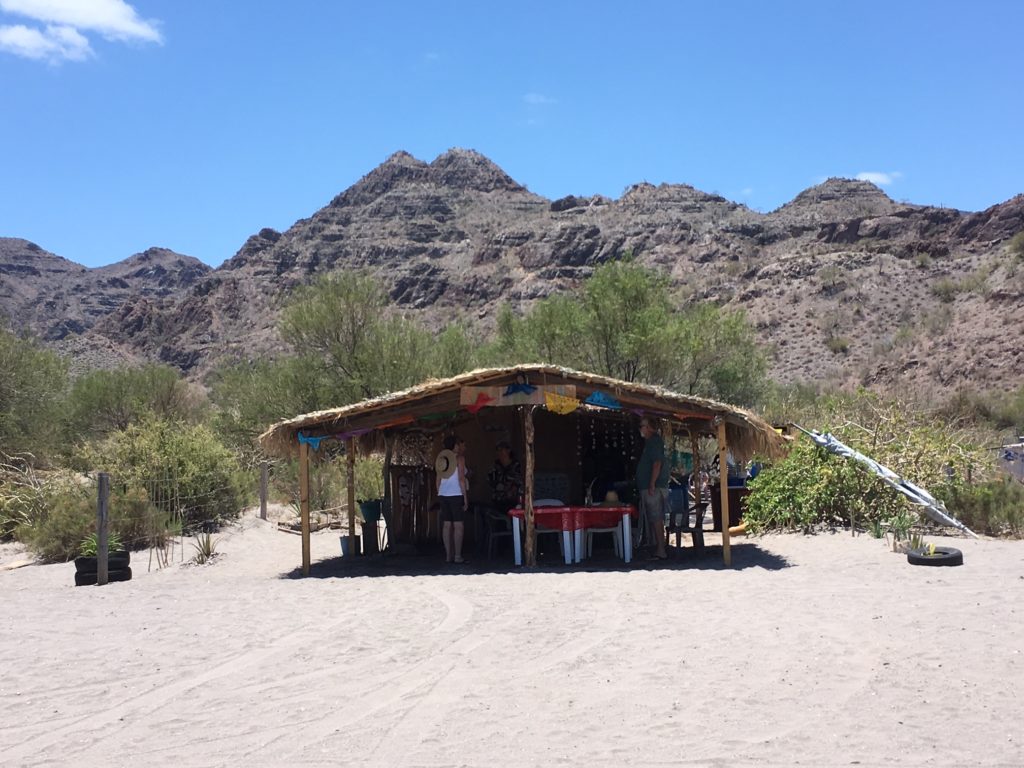
The La Palapa Brisa Del Mar Restaurant at Agua Verde. Not much to look at from afar, we know, but they actually added a palapa “veranda” in front since last year, and they are becoming quite popular amongst cruisers. Fish tacos are all that are on the menu unless you order ahead.
At first as we approached the beach in the dinghy, I thought it was gone but then we spotted it and we landed on the beach right in front of the place. We walked up and talked to the Matron proprietor who told us that she was taking reservations for a special Mother’s Day dinner which would be on May 10th, two days out. She would be preparing a goat for the meal. It sounded great, but we did not want to commit to being there that long so we passed on it. We went walking towards the little village and came upon the tienda. There we loaded up on some produce, fresh tortillas and of course, goat cheese! On our way back to the beach we stopped at the restaurant to greet some other cruisers that were there and have a beer. One couple that we met there was Dave and Carol Minor, who along with their friend Linda, were cruising the sea in their beautiful Nordhaven 55 they called Ocean Voyager.
If we were ever to go to the dark side…. This could be the boat. Dave is a retired tug captain who did long range barge passages from the mainland in Seattle area to Hawaii. Carol and her friend Linda were both in legal career fields specializing in insurance fraud. Linda is the only one still working and she is looking around Mexico for ideas of places to relocate to once she retires. Then there was the crew of Grey Boat, which as the name implies is a very grey boat, a small sloop with a couple and their 20 something daughter. We got lots of good information about highlights in Bahia Concepcion where we will be in a few days, including where to find the whale sharks! Cindy and I made reservations for dinner that night and went back to some dinghy exploration. When we arrived for dinner, we were the only ones there. The meal that night was going to be Chicken Mole, a favorite of Cindy’s. No menus here, you get what is being served, kind of like when we were growing up at home! The first time we visited Agua Verde, we took some photos of the family and had them printed when we were in Loreto. On our way back to La Paz last year, we dropped the photos off as a present to them. At the time they were really happy about our little gift and they remembered who we were this time. They had our boat card pinned up on the restaurant wall, which mom was keen to show us.
During the day, several of the boats in our favorite little nook of the anchorage left so we moved over there. We were nestled in between Jake, a boat who’s skipper does a lot for the radio net with weather reports or as needed and Steelaway, an old 36 ft steel hulled sloop that the older couple who owned it had purchased in Guaymas as a project boat a few years ago. It was a rough looking old boat but we could tell they were very happy with it. That night in our protected little anchorage, the water laid down like glass and we had a still, full moon night. We spent some time sitting on the bow and taking it all in before we went to bed. The sand in that part of the anchorage is packed hard so I could hear the anchor chain moving on the bottom whenever I awoke: kind of an eerie experience and it takes a moment before you realize what it is you are hearing.
May 10, 2017
We got up early and started getting ready to depart for Puerto Escondito. I was working on deck and watching a school of skates circle the anchorage, jumping high into the air and flapping their fins like wings. It’s like they are evolving and someday I expect one will jump out of the water and fly away! Though not in our lifetime, I know this will come to be.
Just for fun, and as practice for a time we will need it, Cindy sailed off our anchor and maneuvered around the other anchored boats and out to sea. The motor was running in neutral in the event something happened and we needed it, but we did not. We sailed out of the anchorage on a very light breeze. The water was so smooth that we were making 2.5 knots in 5 knots of wind. In short time the wind went away all together and we started to motor sail. This was ok as we needed to make water and we needed the engine running for that.
There is a section of water the last 10 miles or so of the run to Escondito where the winds normally are from the west and in the 20s coming off the shore. We kept waiting for this but it never occurred. It stayed calm the whole trip.
As we got to within a couple of miles of the place where we would be turning to the west and running a course between the Baja and Isla Danzante, we saw our new friends’ boat Ocean Voyager stopped and close to the shoreline. They had passed us earlier doing 7.5 knots to our 5.5. Dave, the skipper, then hailed us on the radio and told us that they were herding a pod of dolphins our way. In the distance, now in front of their slowly moving boat, we could SE what looked to be hundreds of dolphins jumping and splashing about.
As we got closer I got out the go pro and took some video. Some of them swam on our bow briefly but quickly lost interest because we were moving so slowly. This was by far the largest gathering of dolphins we had ever seen. Dave told us that he had been looking for them because the last few times he had come up this way, he had encountered the large pods.
After chasing dolphins for a time, we continued into Puerto Escondito, where we planned on staying for three nights. Puerto Escondito is a large protected bay run as a mooring field/marina/toll anchorage by Puerto Escondito Marina. (Formerly a government owned and operated “Fonatur” facility. It has a fuel dock as well as a swimming pool and outdoor jacuzzi, a laundry room, and shower facilities. These were all the things we were in need of after our travels of the last week.
There is normally a market on site in Puerto Escondido as well, but it was closed, as they were moving it to a brand new facility. There is no real town in Puerto Escondito (PE) and the closest real city is Loreto, about 25 km north. The marina was operating a shuttle service to take its customers to the closest tienda to make up for the marina store being temporarily closed. The shuttle would depart each day at 16:30 and you had to sign up ahead of time to get a seat. When we were here last year, the property was owned by Fonatur, but at some time between then and now it went to private hands and they are really trying to do a good job. The rates per day have gone up by 50% to an equivalent of $15 per day. There is a nice restaurant with a view over the bay but the prices are ridiculous so no one goes there.
Interestingly, there is another restaurant at a hotel less than a mile away that is owned by the same person who runs the expensive restaurant and their prices for the same meals are half what the marina restaurant charges! They will even send a shuttle to pick you up and bring you there and back if you so desire. So Cindy and I did just that. We had a nice meal and use of some good wifi for a few hours.
One morning while we were relaxing, our friends Patrick and Celene from Voilá stopped by by to say hello. We met them last season in Tenacatita. They told us they were getting ready to go to Isla Carmen, as they heard the fishing for cabrilla was very good there. Patrick had some lures he swears attract anything and he was anxious to try them out on the cabrilla, also known as grouper. A friend of his that came to visit from the US brought him several of these “super lures” and he gave me a couple to try my luck with! I told him we would likely see them in the anchorage there on the northeast end of Isla Carmen near the old salt mines in another day.
While we were in PE, we were able to catch a ride with our friends David, Carol and Linda on Ocean Voyager. They had rented a car and were headed to Loreto, where we joined them for breakfast and then spent a whole day walking around town before provisioning on our way out of town. We were able to catch a bus back to PE for just 60 pesos but it is much more difficult than a car because the walk to the bus station is long, and then the walk from the bus stop to the marina is long too. Loreto is a very cool small city with anything you may need or desire. It is pricey because it is mostly tourist fueled but they do things very well. It is one of the few places in Mexico that has a brewery which I really enjoyed.
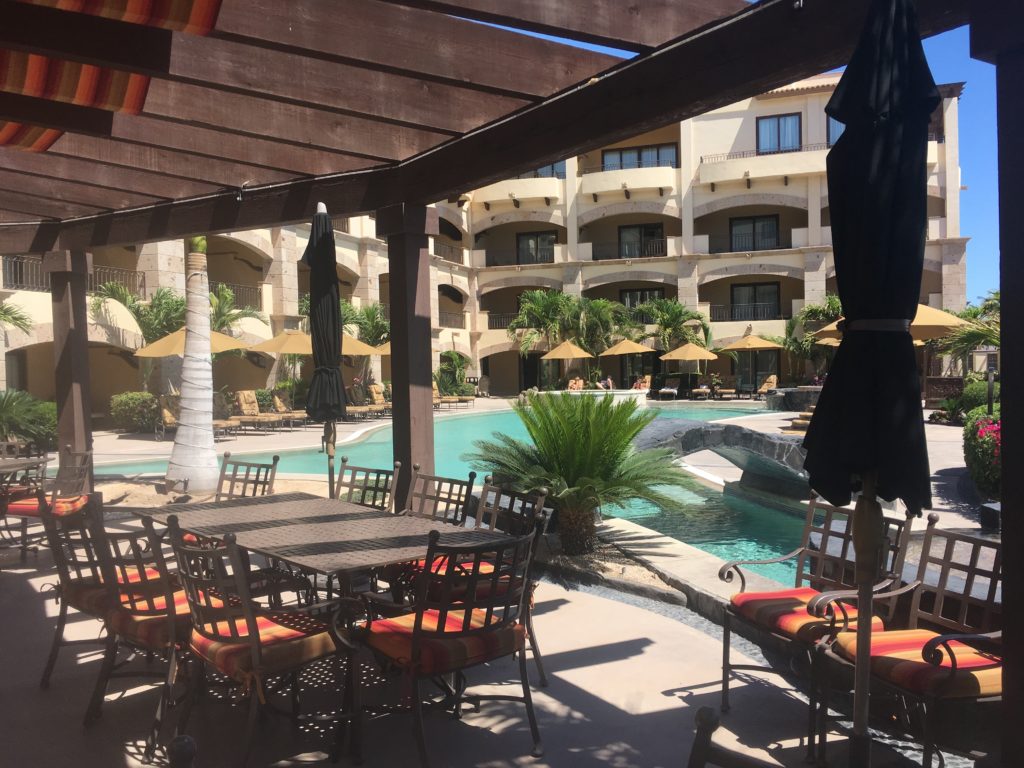
There is a nice hotel in Loreto right across from the oceanfront boardwalk. Cindy’s sister Sharon was going to stay here before her plans changed. We thought we would take a walk through the hotel and take some pictures for her
May 13, 2017
Having had a couple restful days and having completed our re-provisioning, it was time to head out for our next anchorage. We did decide to go to the northeast side of Isla Carmen, and to hopefully catch up with Voilá there. It was going to be a 26 mile day, transiting out of PE and between Isla Danzante and the southern tip of Isla Carmen before traveling up the east side of Carmen and around a cape to get to an anchorage that would provide some nice Southerly protection if we needed it with the current weather.
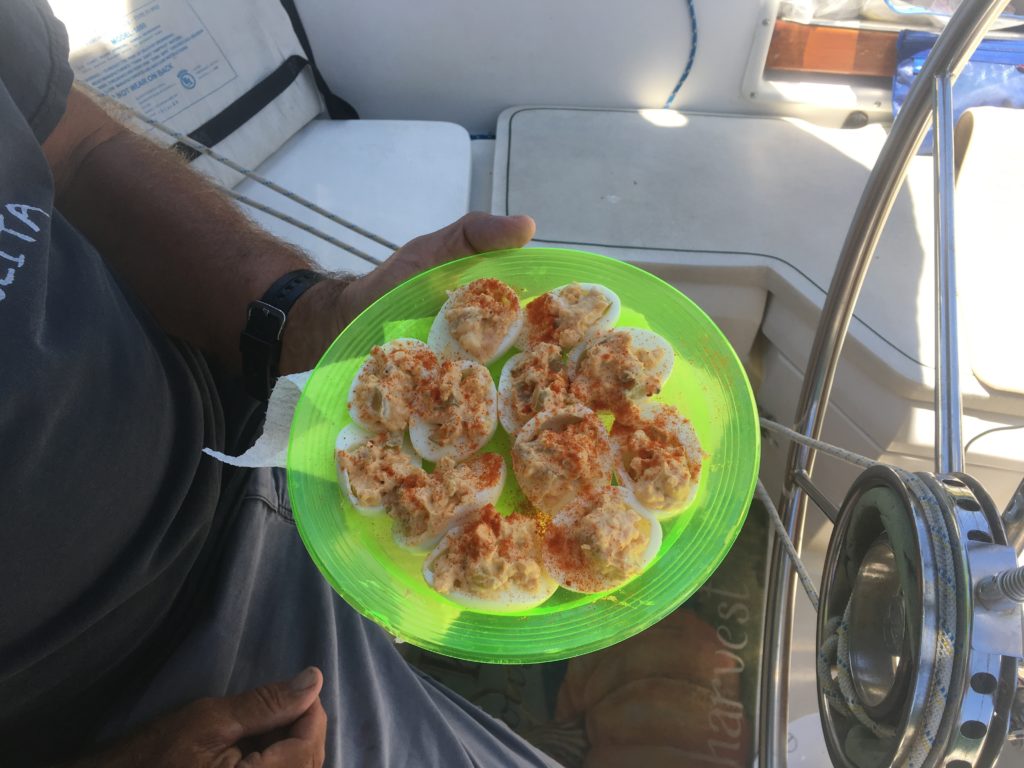
Cindy got the munchies on our voyage that day so Rick whipped up some deviled eggs. 21 years together and Cindy never know about this hidden talent!
While we were on our way closer to the northern tip of Carmen, we saw a fishing panga with someone waving a paddle in the air. At first I thought it may be that they had a longline out and they were signaling to pass off their stern, but as we got closer we could see they might be in distress. We tried radioing them and made contact. It was a Mexican sport fishing panga with some gringo guests and they had dead batteries. The skipper asked if we could give them a jump start. I was worried we may have had to tow them to Loreto or something so this was better news! We were making preparations to come along side when the skipper’s son got in touch with him to tell him he was on the way with 2 fresh batteries. We breathed a sigh of relief and went on our way, letting them know if they had further difficulties they could call us on the radio as we would be just around the corner at Bahia Cobre or thereabouts.
When we arrived in the anchorage, we saw Voilá and we settled in near them. We were the only two boats in the anchorage. In our guide book we were instructed to stay well offshore in this anchorage as it was very rocky bottom closer in. This meant there would likely be some good fishing all along the shore! We had been anchored for awhile with no sign of Patrick and Celene and finally I saw them way off in the distance heading back in their kayaks. When they arrived, Patrick told me they had been surveying and were seeing many fish. He invited me to go fishing with him a little later that afternoon.
So Patrick picked me up in his dinghy at 16:30 and we headed out to catch some fish! Normally, the method I use in an anchorage is that we troll a bit but I use a spin casting rod with lures I can cast into some likely spots. Cindy drives the dinghy leaving both my hands free to fish as she follows a contour close to rocks and shore. Instead, Patrick uses an ocean rod and open reel so we put our lines out on either side of the dinghy and trolled them from about 80 feet behind us. Patrick got a few hits early on and then hooked one. He landed it easily and it turned out to be a Green Jack of about 2 pounds. A good catch. Shortly after that he landed a nice probably 4 pound cabrilla (Also known as a grouper). Then I finally hooked one. I could tell he was a good size right away and it took about 5 min to land him, unfortunately he was a Skipjack Tuna, so we released him with nothing more than a pierced lip.
We headed back as the water coming around the point to our a anchorage was beginning to build. Patrick insisted on giving us the cabrilla he caught as he said he already had some on the boat and they, like us, do not have a freezer. Besides that, Patrick and Celene both are just awesome and generous people. We got together later that night for margaritas and some snacks on Cool Change. We set a date to fish in the morning. This time we would use both our dinghys and Cindy and Celine would come along. Pat and Celine were getting action early on and hooked and lost a huge something. I had just a couple of exploratory hits and just when we were about to turn around and go back I hooked something big! He was a great fighter on my spinning rig and lots of fun to catch. It turned out to be another cabrilla. This one Patrick wanted to weigh and it was 8 pounds! Cindy got some awesome fillets off of it and we brought it over to Vóila that evening. Celene cooked them up along with some fish cakes she had made out of a trigger fish they had caught. Picture
When we first met Patrick and Celene it was at the mayor’s dinghy raft up in Tenacatita last season. The theme of the raft up was a talent show and Patrick played guitar and sang a song called “a boat and a pony.” It was really cute and we could tell he was quite the polished musician. Later that night in a mutual friend’s powerboat named Small Crew, he sang another song, that he wrote, which was a Portlandia style satire about people in Portland with their Suburu Outbacks. It was a great tune and Pat is quite a musician. Anyway, just before we left their boat for the night, he gave us a copy of his CD that he professionally recorded back home in Oregon. We look forward to listening and enjoying it. When we left, it was after dark and I could not get the dinghy motor started. It is a problem that happened once before a couple days earlier in Puerto Escondito. I think it is a fuel issue related to fuel hose regulator assembly but I have not yet figured it out. So, no worries, we did not have far to go to get back to Cool Change so we just rowed our way back.
May 15th 2017
We left out of the anchorage to continue our trip north next morning. Patrick and Celine were going to continue to explore the island for a few days before meeting up with some friends headed their way. We had 44 miles to go to get to our next anchorage back on mainland Baja. It is called San Juanico and is one of the most beautiful anchorages we have seen in Mexico (photos ***). We had stopped there last season on our abbreviated three week exploration of the Sea of Cortez. We had met up with our friends Rob and Nancy on “Shindig” there. They are currently in the South Pacific having done the big crossing this season.
As we neared the northwestern end of Isla Carmen, we expected and received some nice sailing winds. We shut down the motor and sailed for about an hour untill the winds died out again and we were back to motoring. In spite of having to listen to the motor, it was another beautiful day in paradise and we were having a great time.
It is scary how fast anyone’s world can change and ours was about to change in a big way. We had been fairly remote communication-wise throughout our travels in the Sea of Cortez. Occasionally we would have cell service in an anchorage but usually not. We must have been close enough to Loreto at the time we received a phone call from California. It was our good friend, former housemate and now neighbor calling with some tragic news. Family had been trying to get in touch with us for two days and finally dear Bev told my sister she would call us every hour until she got through and her persistence paid off. The news was that our nephew Christian had been killed in an accident. My Sis Linda wanted to get through to us to get us the news in hopes we would be able to come back and be with the family over this next week and for the funeral services.
We did manage to get to California in time. Eighty-six hours after that initial phone call from Bev on Monday, after a 100 nm sail, a 15 hour bus ride and a 15 hour drive, we arrived home in Northern California in a Tijuana rental car at 3 a.m. on Friday morning. That adventure is described elsewhere. It is now the following a Thursday and we are back home in Mexico on Cool Change, preparing for whatever we can salvage of our last weeks in the Sea.

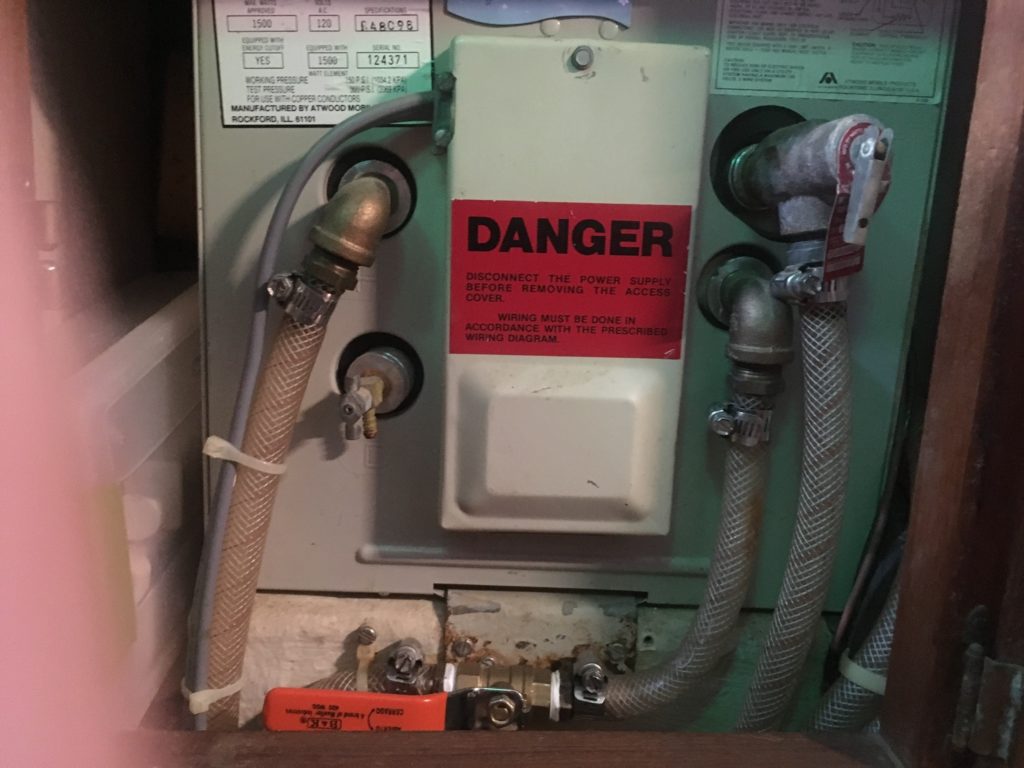
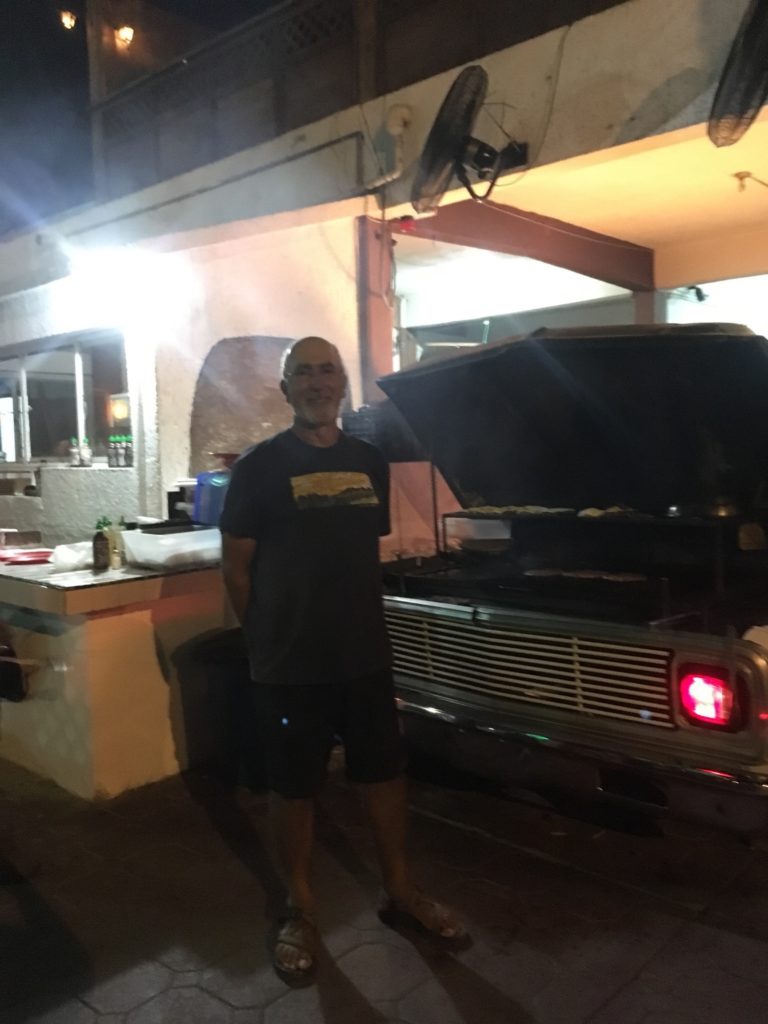
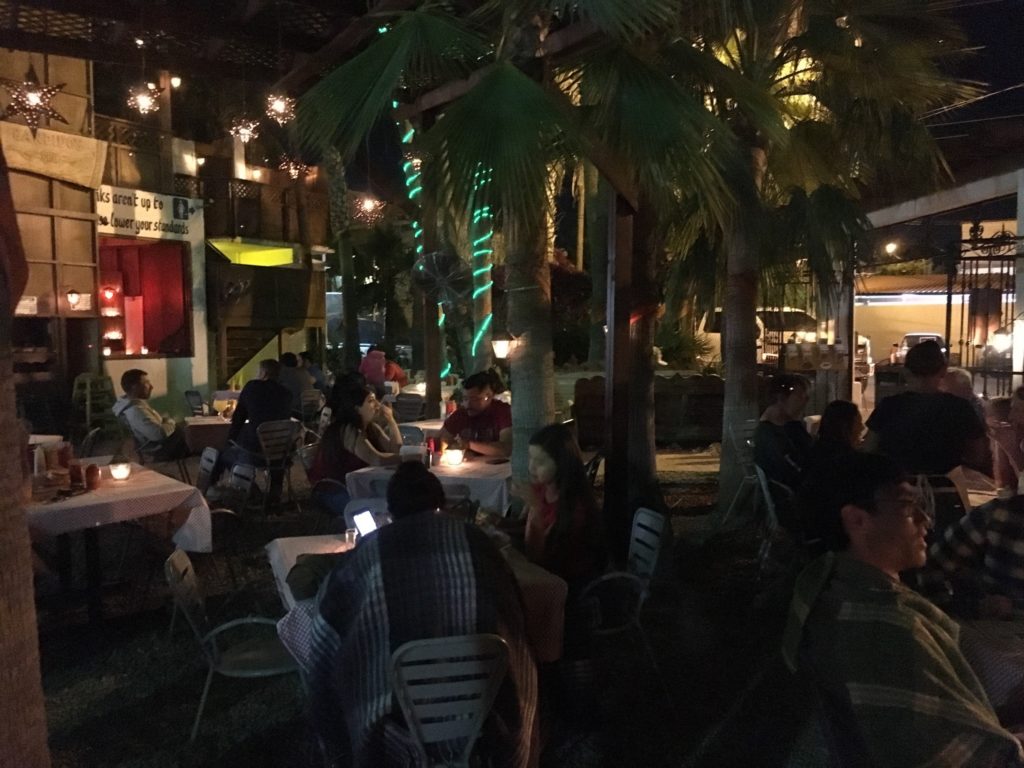
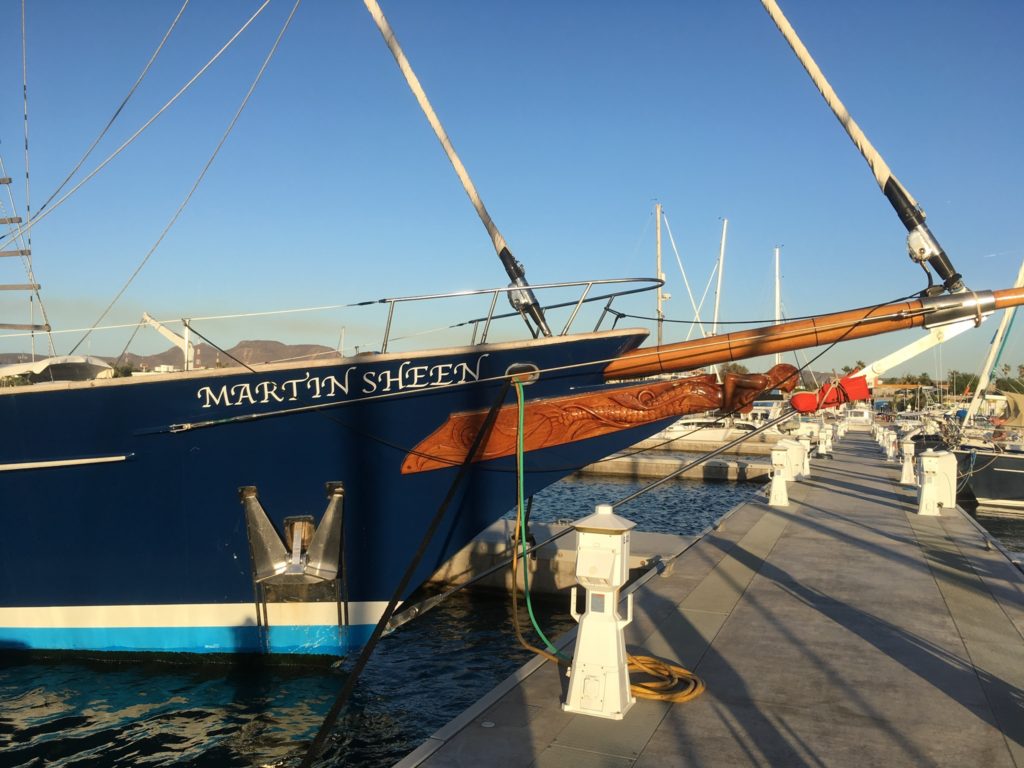
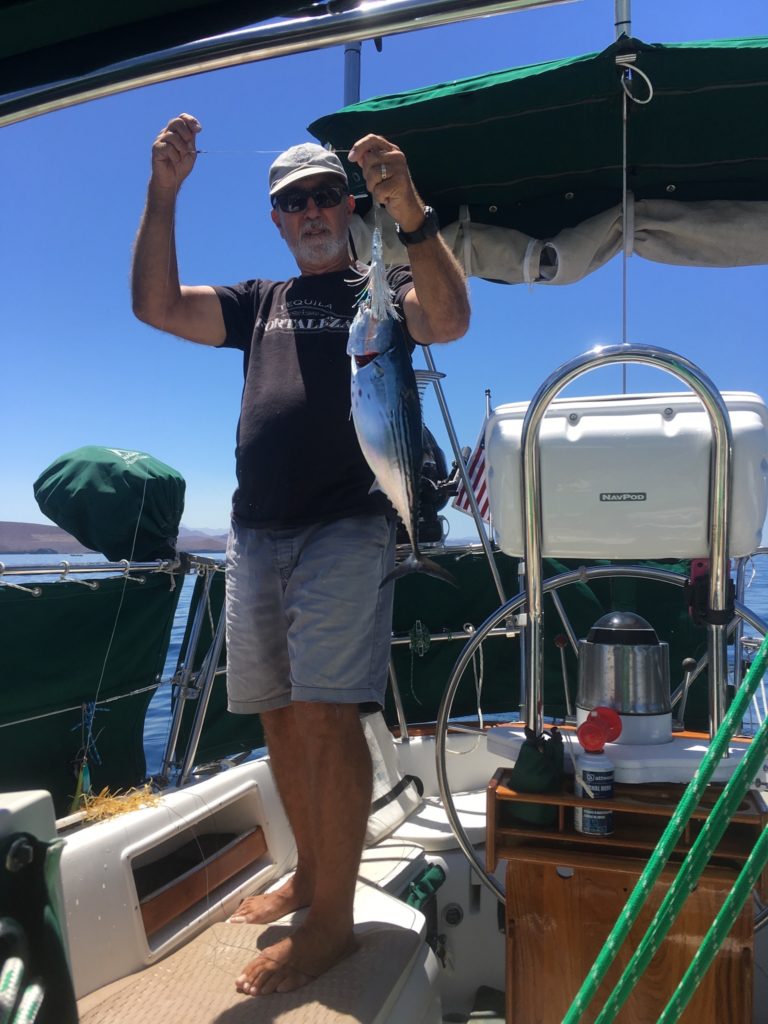

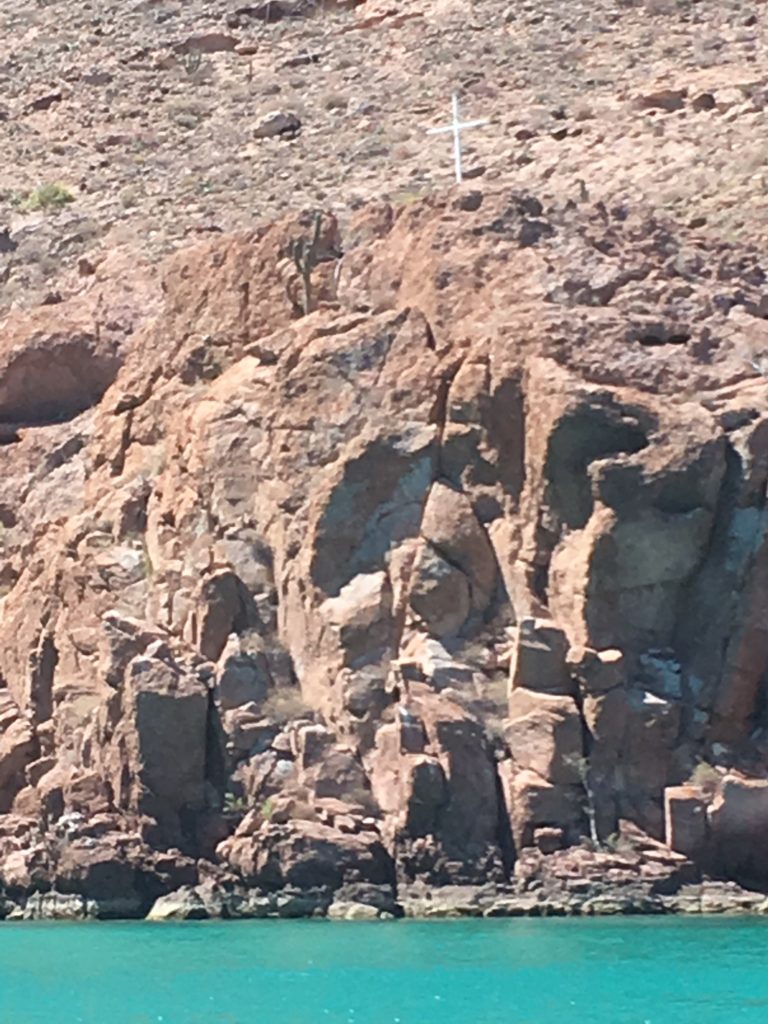
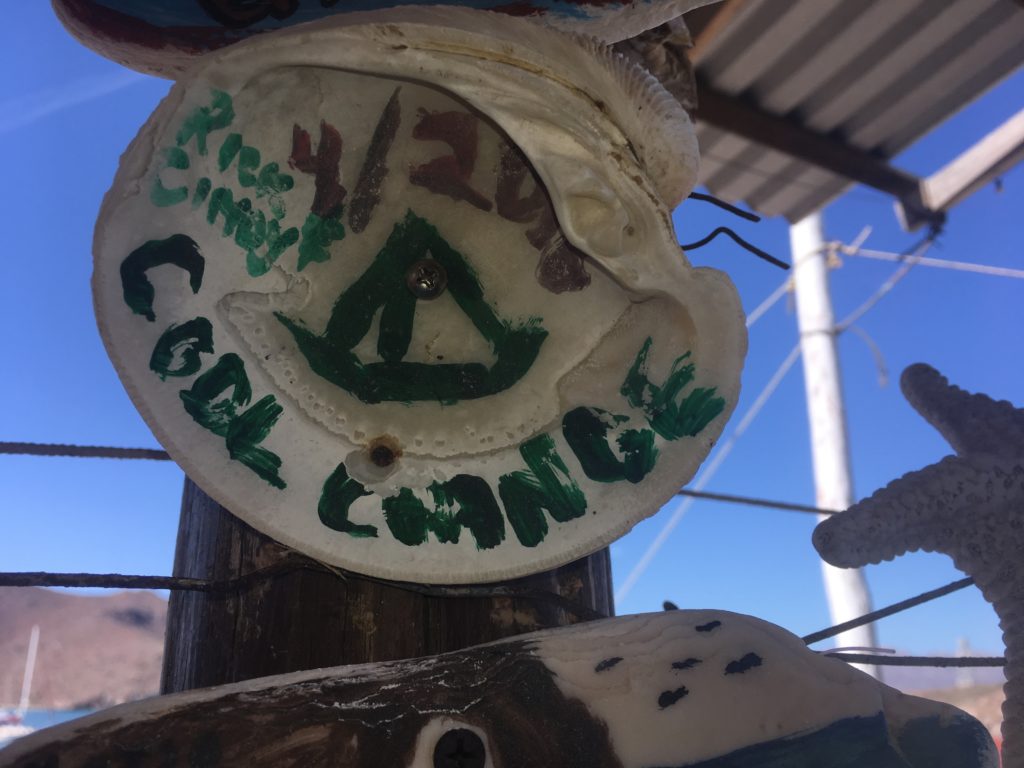
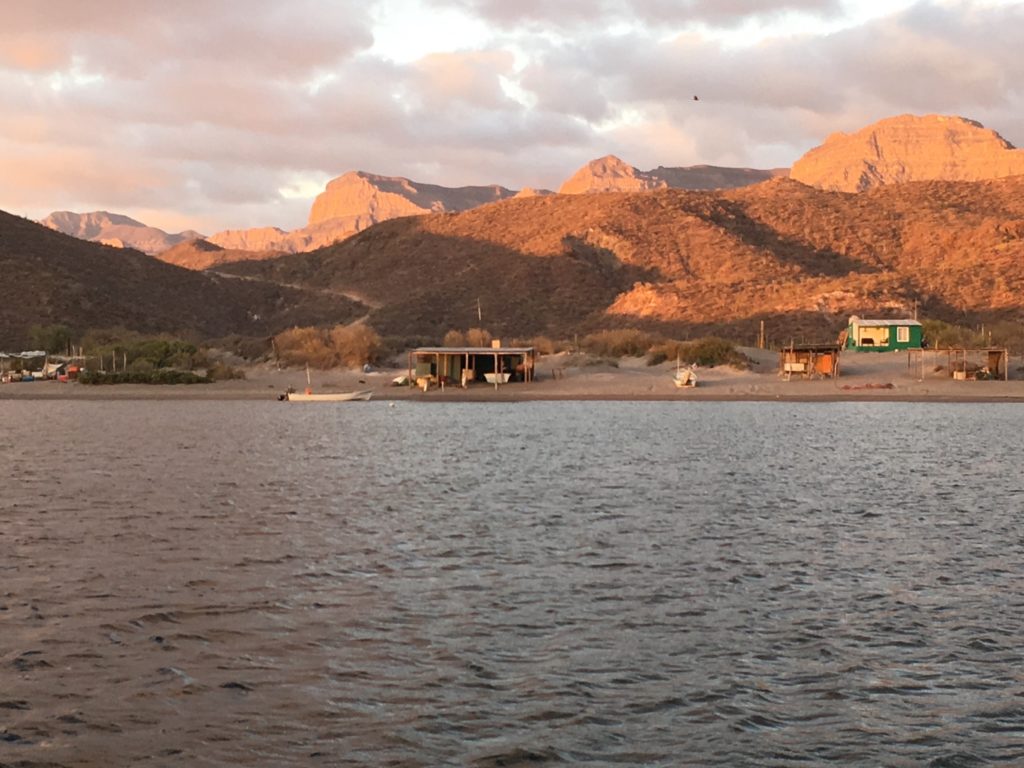
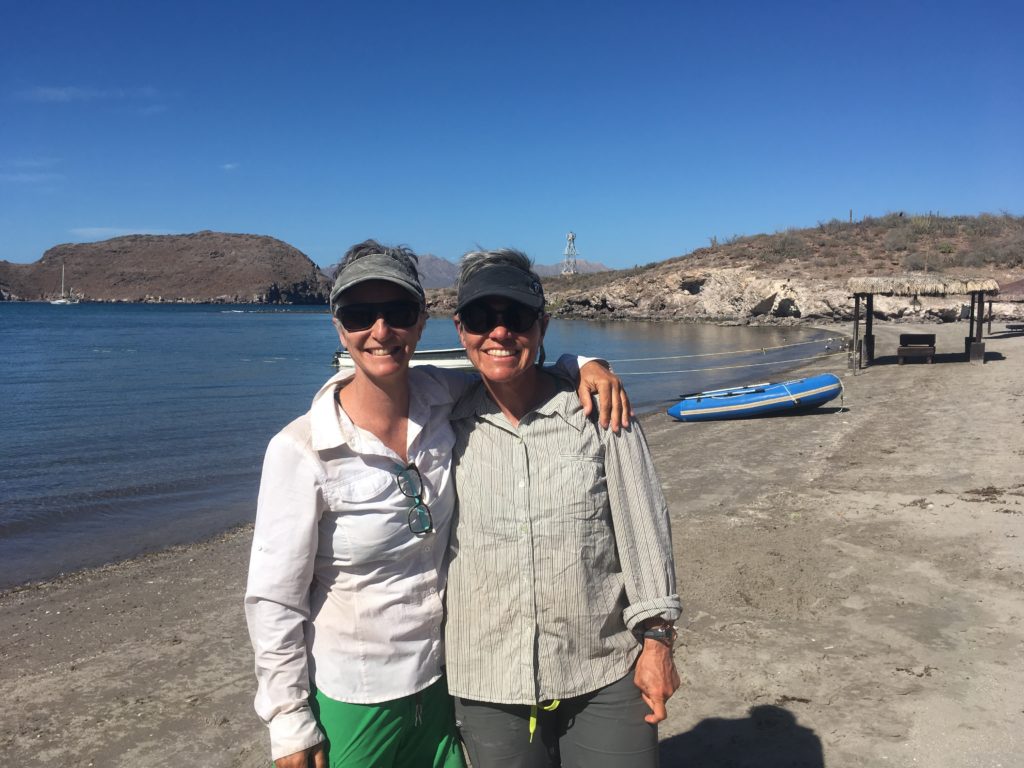
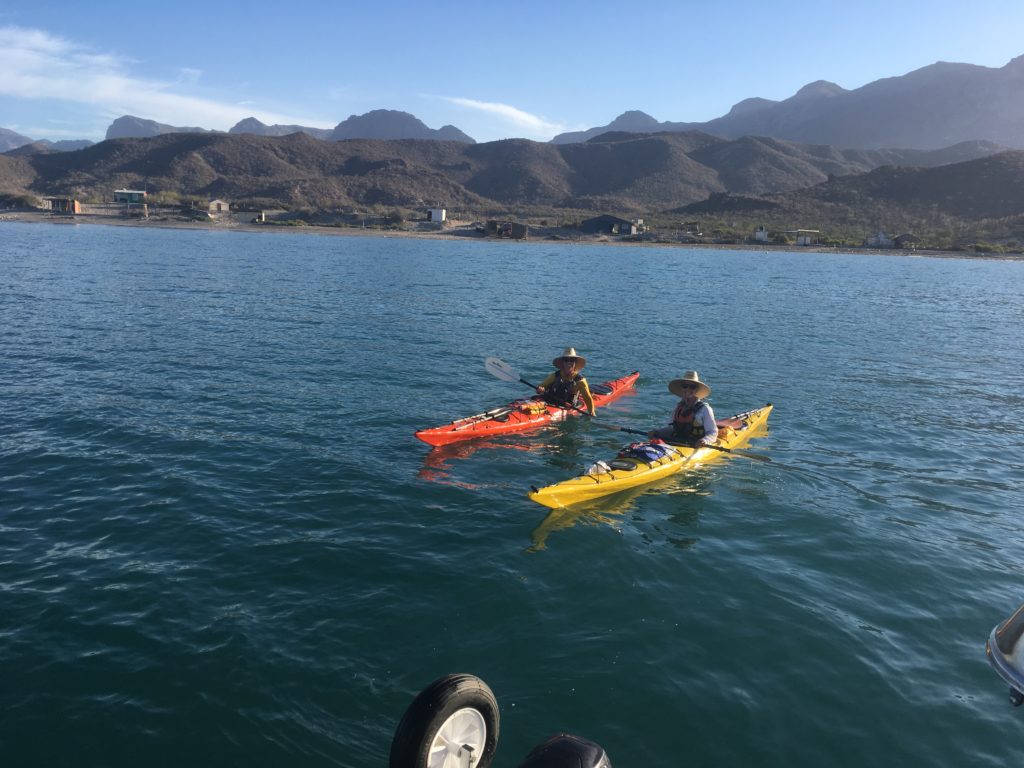
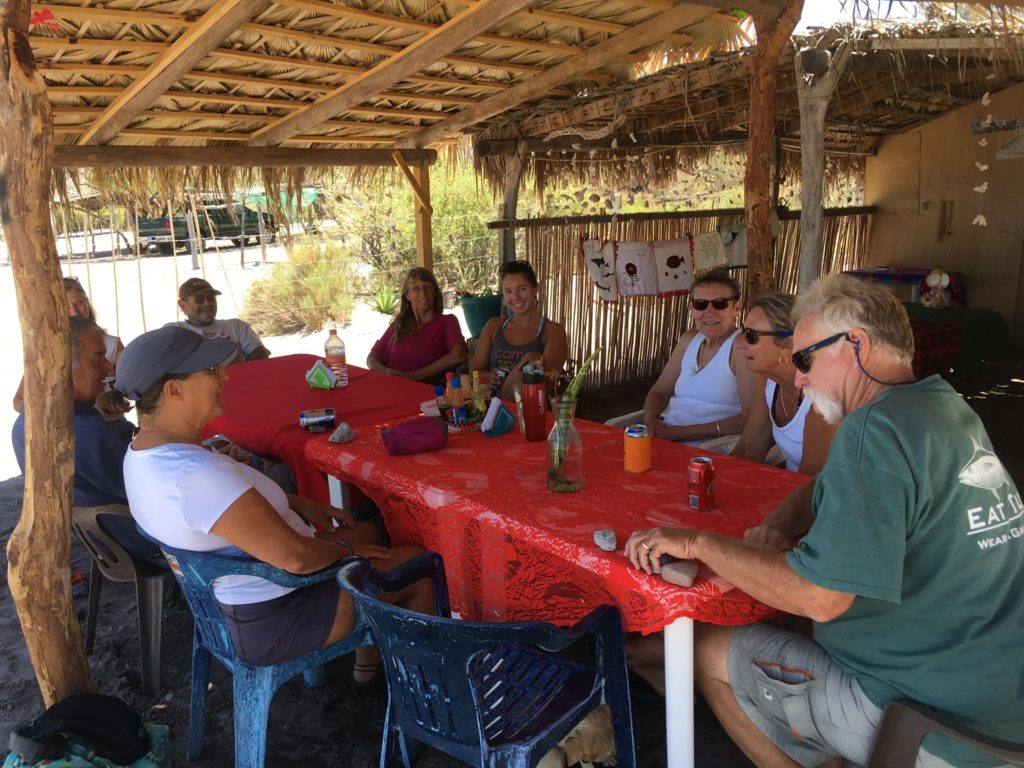
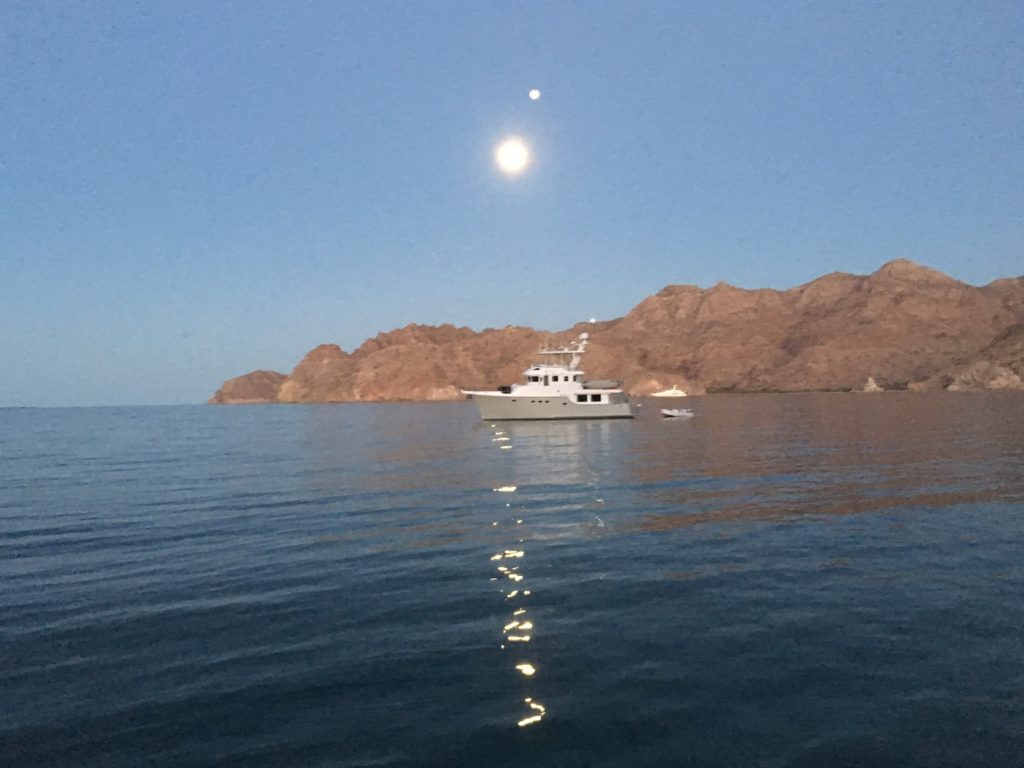
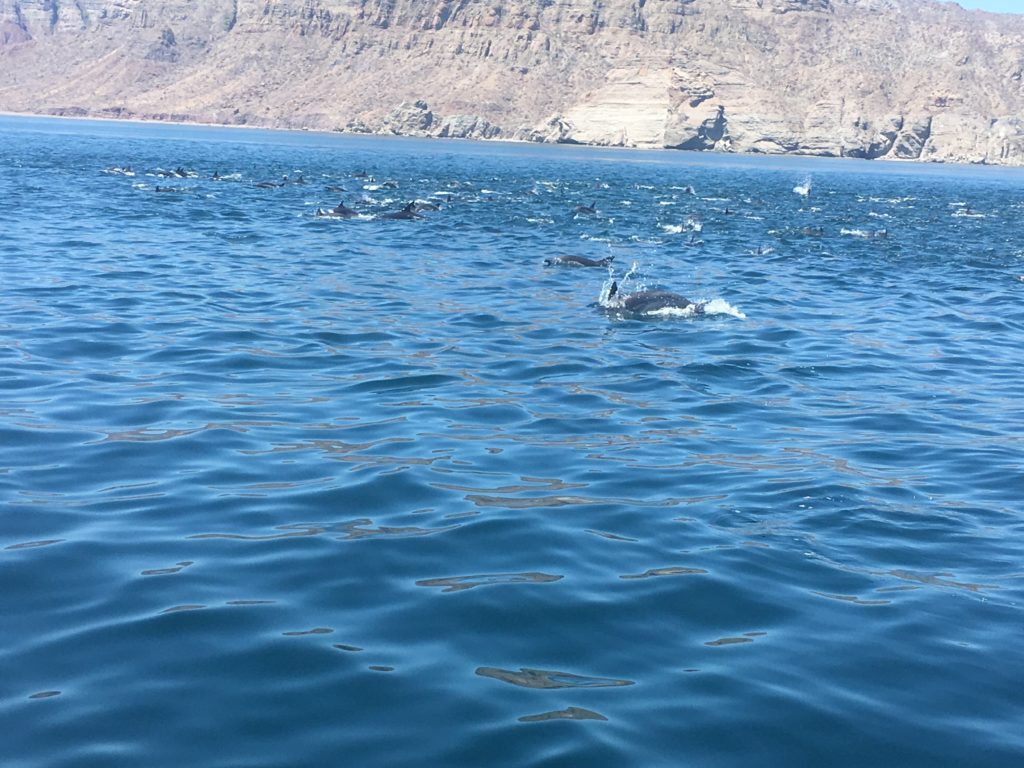




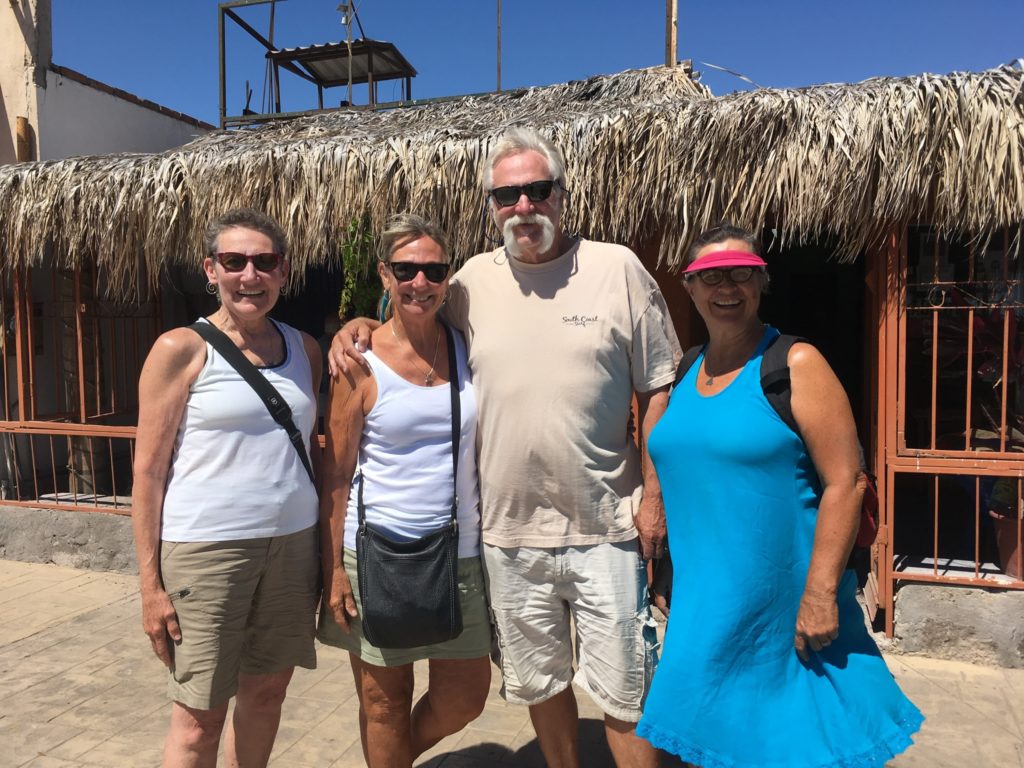
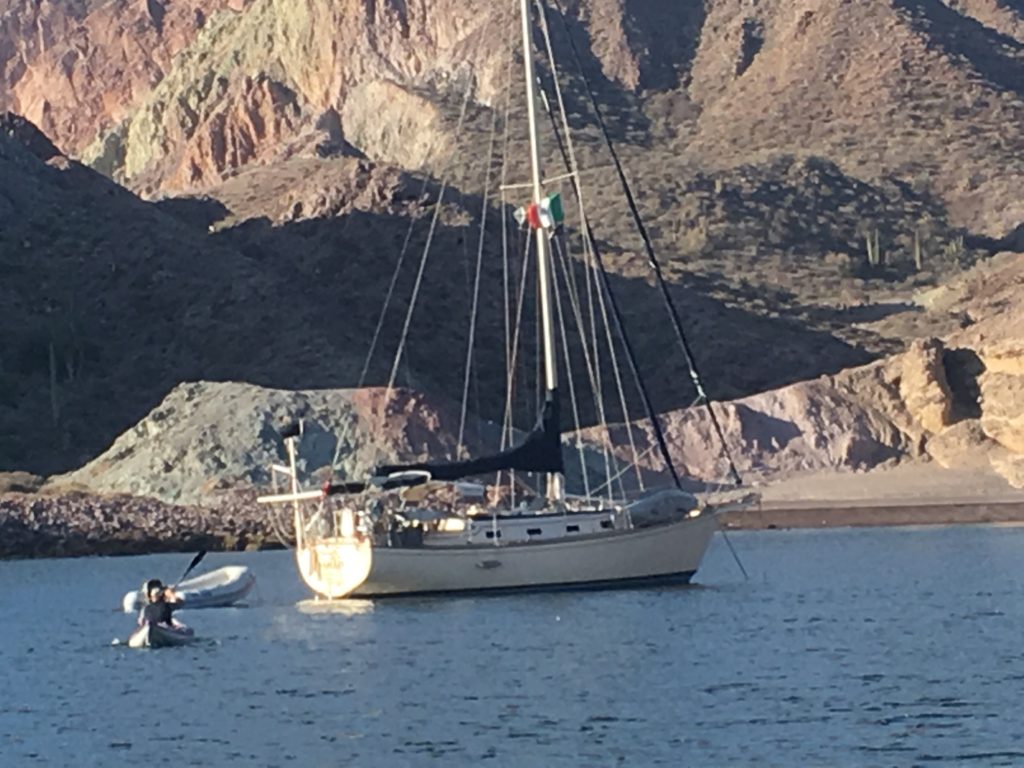
Rick and Cindy,
We are so sorry to learn of your loss. We are glad you were able to be contacted and get back to California. We all worry about our families and know that it’s difficult to be reached. We look forward to seeing you this next season and send our condolences.
Best regards,
Patrick and Celine